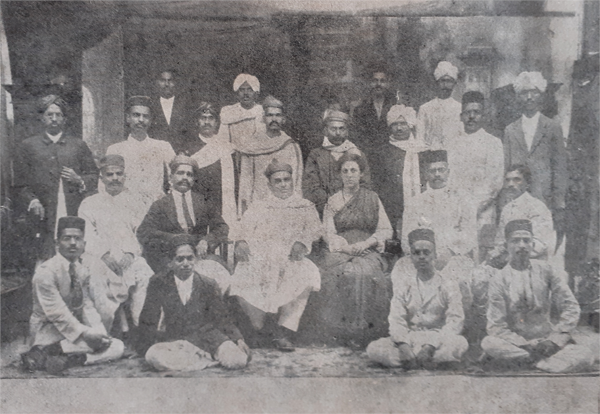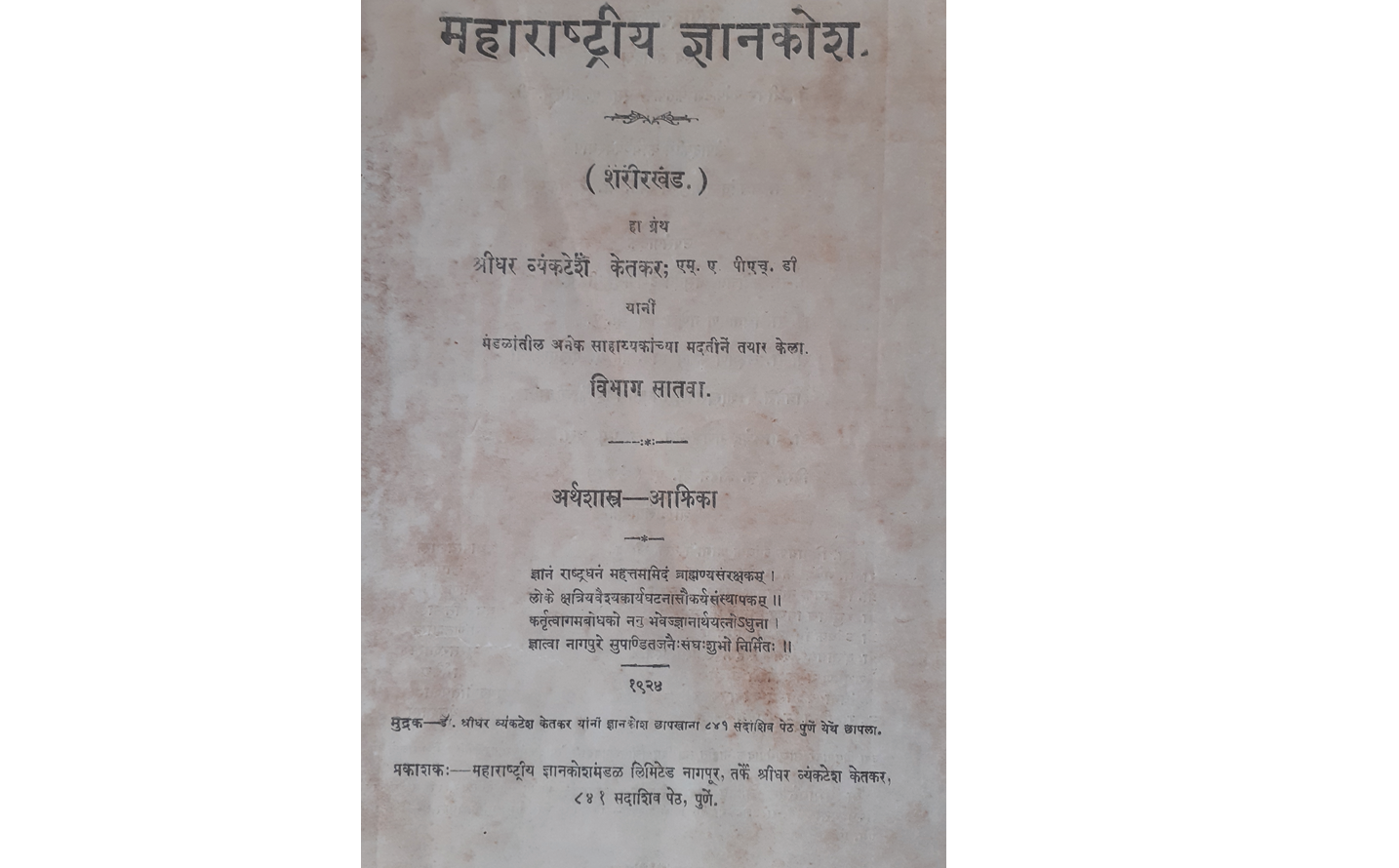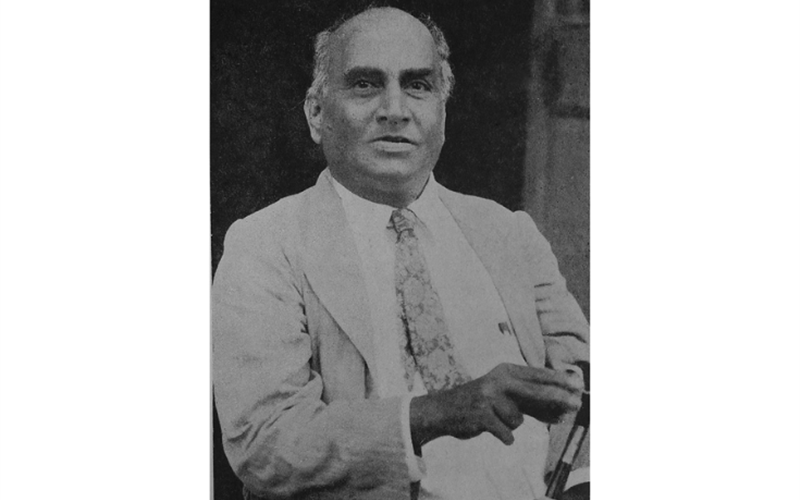Print History: Jnanakosh Chhapkhana - Printing an encyclopedia
When no commercial printing press could meet the challenges of the largest print project in Marathi, its editor had to take urgent remedial measures
30 Nov 2023 | By Murali Ranganathan
During the second half of the nineteenth century, a constant lament could be heard in scholarly and literary circles of all major Indian languages. And that was the lack of encyclopedias in these languages tailored to the special interests of its speakers. For example, in Mumbai, the author Govind Narayan (1815–1865), tried to drum up support for a Marathi encyclopedia in the 1850s. Coining the word "sarvasangraha," Govind Narayan gave public lectures and circulated proposals outlining the contours of the literary project and appealed for support. However, it seems to have been given the cold shoulder by Mumbai intelligentsia.
A champion of the Indian encyclopedia
Nearly five decades after Govind Narayan’s death, there emerged another champion of the Marathi encyclopedia. And perhaps, he was the best qualified among his contemporaries to take up this monstrous intellectual and business challenge. His name was Shridhar Venkatesh Ketkar (1884–1937). As a schoolboy in the Central Provinces, he was teased by his peers with the nickname ‘encyclopedia’ for his wide-ranging knowledge. On first encountering the Encyclopedia Britannica in 1897, Ketkar wondered if such a book existed in Marathi. In 1906, Ketkar went to the United States of America for advanced studies in economics at Cornell University, New York. Instead of focusing on economics, he would attend lectures in subjects as varied as geology, biology, bibliography, history and archaeology.
During his five years in the United States, Ketkar was inexorably drawn into the world of encyclopedias. When he pointed out glaring errors in the entries related to economics and India in the Nelson’s Perpetual Loose Leaf Encyclopedia, Ketkar was invited to join the panel of writers by its chief editor. A little later, in 1910, he was engaged as a canvasser for The New International Encyclopedia published by Dodd, Mead & Co. Though he sold only four copies, he managed to get an understanding of the issues involved in marketing and selling encyclopedias. His acquaintance with the chief editor of the Webster’s Dictionary gave him insights into the editorial complexities of a project of this magnitude.
In 1912, when Ketkar returned to India after acquiring a doctorate in economics from Cornell University, he still had no idea that he was the man chosen to be the progenitor of the Marathi encyclopedia. Besides teaching at Calcutta University, he kept up a busy writing schedule for the next two years, publishing two books on the Indian economy. Ketkar wanted to start an English magazine on the lines of Modern Review but was soon dissuaded after meeting its editor, Ramananda Chatterjee. Ketkar moved back to western India in 1914 with no definite plans and no fixed address, shuttling between Mumbai, Pune and Nagpur.

Jnanakosh Mandal editorial team (June 1920)
Ketkar was one of the earliest proponents of the linguistic organization of Indian states which he felt was the surest way of achieving social and economic progress. Such a reorganization would lead to the development of local languages and literature, support better quality education in all fields and consequently increase innovation and productivity. The creation of knowledge texts like encyclopedias and dictionaries in these languages was one of the first steps. When he attended the Madras session of the Indian National Congress in December 1914, he circulated a printed pamphlet outlining his ideas on linguistic reorganization of India to the delegates.
During this trip to South India, he met the promoters of Andhra Vignana Sarvasvamu, the recently launched Telugu encyclopedia and studied its business model. The four founders would contribute hundred rupees per month until the project became self-funding. Customers would be sent an instalment of 100 pages priced at one rupee payable on delivery. The whole book, consisting of sixty such instalments, would be priced at sixty rupees. As they had managed to get seven hundred subscribers, they felt that the venture would be a success. However, things did not go to plan as the instalments could not be published on schedule. If two instalments were sent together, their subscribers would refuse to accept them as they had to pay two rupees instead of one. And slowly, many subscribers failed to buy additional instalments. The encyclopedia could not be completed and was perhaps abandoned after the death of its chief editor.
All these experiences finally led to Ketkar consider compiling and publishing a Marathi encyclopedia. He began a series of meetings with leading Marathi intellectuals such as R G Bhandarkar and V K Rajwade, politicians such as G K Gokhale and B G Tilak, and potential customers and financiers. Since the response was very encouraging, Ketkar circulated a prospectus outlining his proposal. At the very outset, Ketkar realised that business management and financial prudence were as important as literary skills and knowledge for such a venture.
Ketkar proposed the formation of a company, Maharashtriya Jnanakosh Mandal Limited, which would only publish the Maharastriya Jnanakosh. It was envisaged as a twenty-volume book, each quarto volume extending to 500 pages of double-columned text. The company would issue 500 shares to raise a capital of 50,000 rupees. Ketkar kickstarted the process by purchasing 25 shares himself. Many of the earliest shareholders were his well-wishers and friends from the Central Provinces.
Another source of funding was the advances received from subscribers. The company aimed to initially sign on 500 subscribers who would pay annual instalments of twenty rupees for five years towards a copy of the encyclopedia. The company eventually managed to sell 3,000 copies of the encyclopedia. Ketkar claimed direct credit for nearly half the sales. He had hoped that the Marathi-speaking princely states, especially the larger ones like Baroda, Gwalior and Indore, would support the project but was sorely disappointed.
The Maharashtriya Jnanakosh Mandal Limited was registered on 8 July 1916 and work began in right earnest on 1 April 1917 when Ketkar was appointed its manager with a salary of fifty rupees per month. The company appointed an editorial team which would shoulder the major burden of writing. A team of specialist writers, to be paid by the page, would be called upon to contribute essays on subjects of their expertise. The Maharashtriya Jnanakosh eventually extended to 23 volumes: five introductory volumes, sixteen volumes with alphabetically arranged entries, one index volume and one supplementary volume.
Printing Travails
While formulating the encyclopedia project, Ketkar had assumed that printing the encyclopedia was merely a technical process. Once the text had been supplied to the printer, it would only be a few weeks before the printed and bound volume would be in the hands of the customer. In December 1915, when he was in Bombay to attend the Indian National Congress, Ketkar had enquired with the Times Press, arguably one of the largest printing presses in the country, if they could handle the printing of 20 volumes, each five hundred pages in length, within a year. Its manager replied that it could be easily done. Ketkar assumed that any of the larger printing presses in Mumbai or Pune could do the same.
The prospectus which Ketkar sent to prospective investors and customers estimated that it would take five years to complete the project. The editing and compiling of the text for the encyclopedia would take four years while printing the volumes would take about a year.
Though the Jnanakosh Mandal was initially based in Nagpur and later moved to Pune, it decided to print the encyclopedia volumes at the Nirnayasagar Press in Mumbai. Founded in 1865 by Jawaji Dadaji, the Nirnayasagar Press was legendary in the Marathi literary world not just for its printing but for the beautiful types cast in its type foundry. Besides printing for other publishers, it also had an impressive backlist of nearly a thousand Sanskrit and Marathi books. If there was any press which had the printing capacity to handle the requirements of the Jnanakosh, it was the Nirnayasagar.
It was with some hope and optimism that Ketkar sent the text for the first volume of the Jnanakosh to the Nirnayasagar Press in November 1919. The managing editor, Y R Date, would frequently travel to Mumbai to oversee the printing and correct proofs. An advance of 3,000 rupees was also paid to the Nirnayasagar Press so that they could acquire new type in sufficient quantities. However, any hopes of quick delivery were quickly dashed. The press purchased only 500 pounds of type which was half of what Ketkar had estimated to be necessary to compose the text in a timely manner. The first volume was eventually published in February 1921, nearly fifteen months after the text had gone to the press. In the meanwhile, the text for the second volume had also been sent to the Nirnayasagar Press. Though the second volume was printed with more alacrity by the end of 1921, the Nirnayasagar Press would not release the copies unless its printing bill of 10,000 rupees was settled. After a legal wrangle lasting many months, the Nirnayasagar Press released 1,500 copies of the second volume which was published in March 1922. This inordinate delay in the publishing of the first two volumes would have worried both the Jnanakosh Mandal’s directors and its subscribers.

Maharashtriya Jnanakosh, volume 7 (1924); the first volume to be printed at the Jnanakosh Chhapkhana
Having written off the Nirnayasagar Press as its print partner, the Jnanakosh Mandal had already begun to look for new printing options. Ketkar zeroed in on Aryabhushan Chhapkhana, yet another venerable print institution. Founded in 1879, it was the biggest printing press in Pune at that time. The text for the third volume was sent to Aryabhushan Chhapkhana in October 1921 with an advance of a thousand rupees for buying new type. But their performance was worse than that of the Nirnayasagar Press. They could only print 250 pages of the third volume in eighteen months. This resulted in the third volume being published in 1924, a few months after the fourth and fifth volumes had appeared.
Based on his experience in getting the first three volumes printed, Ketkar had accumulated enough experience to understand the work situation in these large printing presses. Ketkar estimated that a month’s delay in printing resulted in a loss of 2,500 rupees to the Jnanakosh Mandal. Writing to the shareholders of the Jnanakosh Mandal in September 1922, he notes that:
If any commercial printing press falls short of compositors, it distributes the print orders of its numerous clients amongst the available compositors and hopes for the best. A job will not get priority even if the customer is willing to pay the best rate. … These large printing presses are simply incapable of handling important print projects. They cannot recruit compositors at a higher rates than the prevailing standard. If some compositors are paid at a higher rate, the others demand the same which these printing presses are loath to pay. We have no other option but to set up our own printing press. It is now quite obvious to us that we have to shoulder the responsibility of printing the entire book.
A Press of One’s Own
The Maharashtriya Jnanakosh Mandal set up the Jnanakosh Chhapkhana in April 1922. It was located in the heart of Pune in Sadashiv Peth, an area bustling with commercial activity and surrounded by a host of printers, publishers and booksellers. For the first two years of its existence, the Jnanakosh Chhapkhana was a press without a printing machine.
Since the process of composing text was the main bottleneck in commercial printing presses, Ketkar resolved to have the text composed in-house. The composed text would be sent out for printing to various presses in Pune. This involved investing in sufficient amount of Devanagari type, composing tools and paraphernalia, and perhaps a proof press to check galley proofs. Ketkar began composing the fifth volume first, perhaps, because the text for the fourth volume was still being finalized. The fifth volume was sent off to be printed at the Jagadhitechhu Chhapkhana, perhaps the oldest extant Marathi press in the Bombay Presidency, having been founded as far back as 1860 by Raoji Shridhar Gondhalekar. Ketkar was evidently not impressed by their performance since the fourth volume was distributed between numerous printing presses in Pune such as Chitrashala Press and Kalagruh Chhapkhana.
The bottleneck shifted from composing the text to binding the printed signatures. If left to the printers themselves, Ketkar’s experience was that binding could be delayed indefinitely. A hundred bound copies would be reluctantly sent to the Jnanakosh Mandal a few weeks after printing had been completed. There was only one way out: establish a binding department at the Jnanakosh Chhapkhana. This department bound the volumes as they arrived from the printers. The fourth and fifth volumes were published within a few months of each other in 1923.
Ketkar must have planned to continue with the same model for further volumes: compose the text at the Jnanakosh Chhapkhana, get the actual printing done from other presses, and bind the volumes in-house. The sixth volume commenced printing at the Karnatak Press in Mumbai by late 1923 but even after four months, they could print only half the volume. And both Ketkar and Date had to frequently visit Mumbai to monitor the printing. Ketkar seems to have been unimpressed by the pace at which the last three volumes had been issued even though he had more control of the variables. Unless the process of printing and publishing was speeded up further, the encyclopedia would take forever and perhaps collapse due to financial mismanagement.
Ketkar therefore decided to take further control of the printing process. The Jnanakosh Chhapkhana invested in two printing machines and geared its operations in such a manner that it could print one and a half formes everyday. To ensure this rate of printing, at least five formes of matter had to be set in type at any given time. The press invested in a substantial stock of Devanagari type (1500 pounds) so that it did not fall short of type in any letterform. The total investment in the printing press amounted to 15,000 rupees.
From June 1924, a regular publishing schedule could be maintained. A fresh volume would be published every two or three months. By April 1927, the Jnanakosh Chhapkhana had published sixteen volumes besides the five introductory volumes published earlier. This event was a milestone not just for Marathi literature and culture but for Indian society at large.
Having the Final Word
The final imprint that emerged from the Jnanakosh Chhapkhana was a memoir by Ketkar on every aspect of the Maharashtriya Jnanakosh titled Majhe bara varshanche kaam urf Jnanakosh Mandalacha Itihas [The History of the Jnanakosh Mandal or My Twelve Years’ Work]. In this book, Ketkar traces the history of the encyclopedia, the numerous legal and financial roadblocks which he had to overcome, the controversies generated by a few entries, and gives a detailed account of the printing of the book. As for the printers with whom he had to contend with, he had no kind words: they were incompetent, inefficient, and rapacious to boot.
His only advice to other publishers was: “Buyer beware!”.
Even though he termed the Jnanakosh a literary and financial success, Ketkar was saddled with a debt of 36,000 rupees when the Jnanakosh Mandal wound up its operations in 1927. He was hoping to generate further sales by selling residual copies of the Jnanakosh. But his main hope was the translation of the Jnanakosh into other Indian languages. The first language chosen was Gujarati, perhaps because of its geographical affinity with Marathi. The text for twenty volumes of the Gujarati Jnanakosh was ready and the first two volumes published when Ketkar died an untimely and unexpected death in 1937.
Shridhar Venkatesh Ketkar was a public intellectual of the highest order in late colonial India. His unconventional lifestyle, his European wife, their adopted children, and his willingness to do the most menial of jobs set him apart from most of his contemporaries. His single-minded focus on the encyclopedia project for twelve years ensured that Marathi was endowed with a world-class encyclopedia at least three decades before any other major Indian language.












 See All
See All